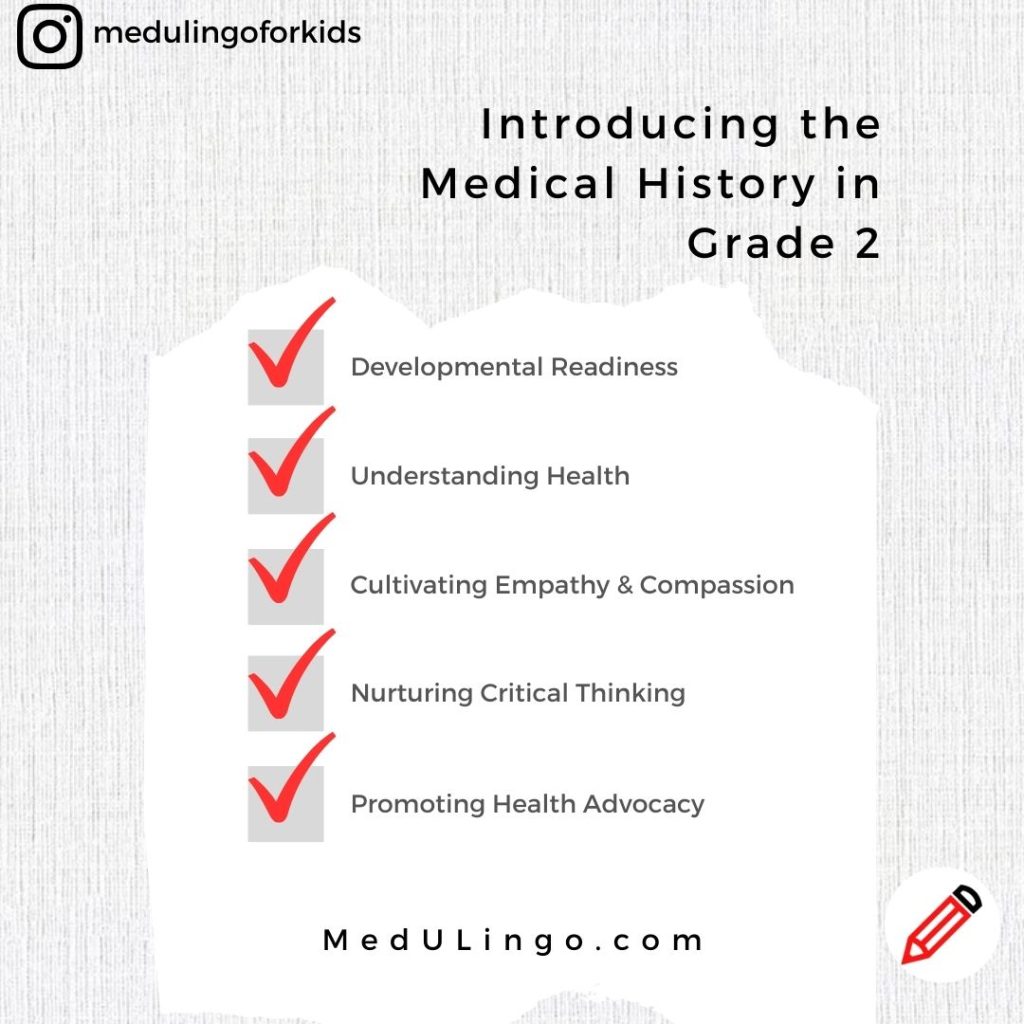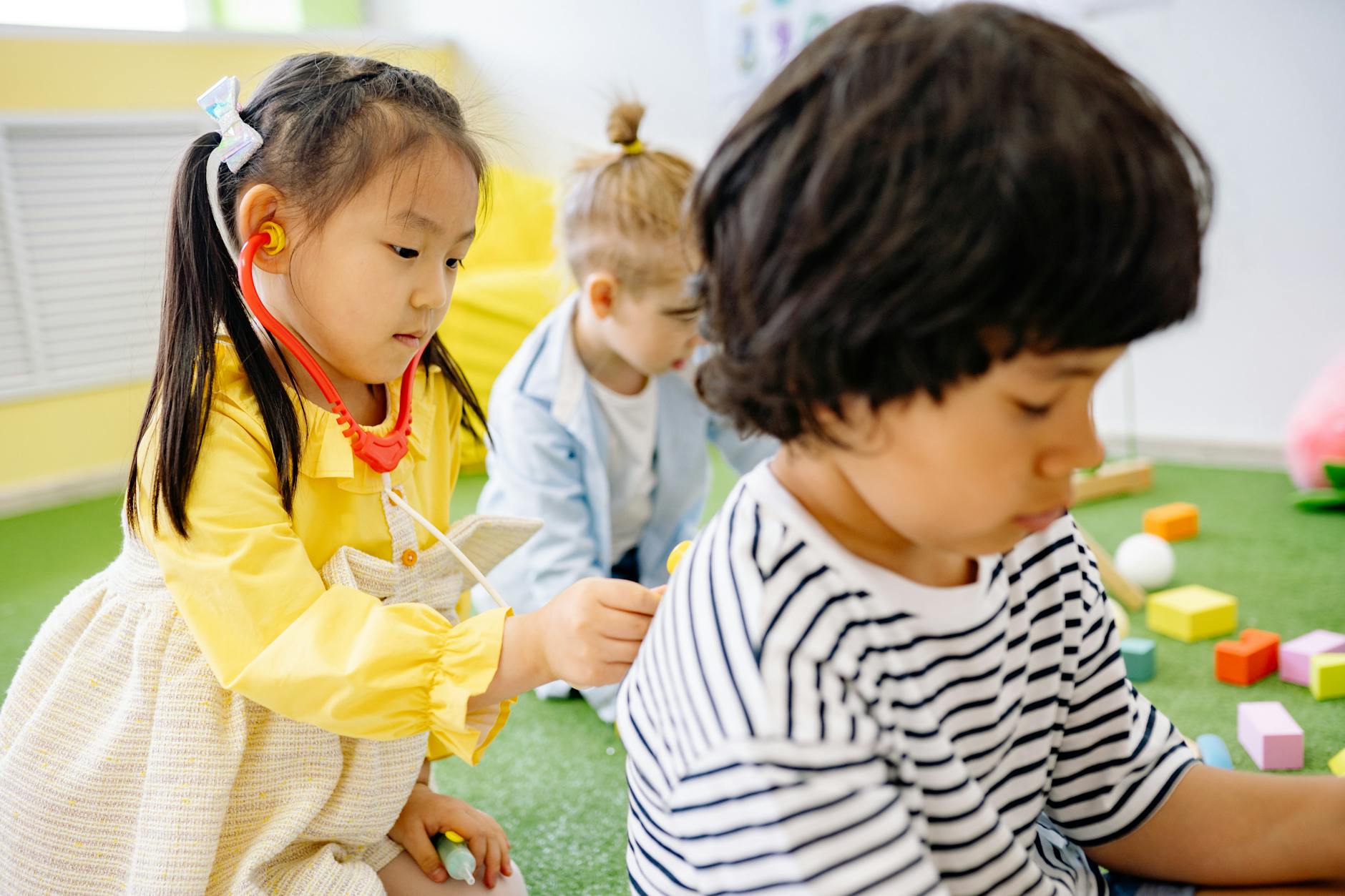Early exposure to essential concepts lays the groundwork for a lifetime of learning and informed decision-making. Grade 2 stands as a pivotal stage in a child’s academic journey, offering an opportune moment to introduce foundational knowledge that fosters health awareness and responsible decision-making. Among these foundational concepts, medical literacy on the medical history emerges as a cornerstone of early education, providing young learners with insights into the importance of understanding a patient’s journey. This article explores the compelling reasons why Grade 2 is an ideal starting point for medical literacy instruction on the “medical history” with an A to Z Medical History activity book and highlights the benefits it offers to young learners.

1. Developmental Readiness:
Grade 2 marks a developmental stage where children demonstrate increased cognitive abilities, expanded vocabulary, and growing curiosity about the world around them. At this age, children are naturally inquisitive and eager to explore new ideas and concepts. Introducing medical literacy instruction on the medical history in Grade 2 aligns with children’s developmental readiness to engage with more complex topics related to health and wellness. With proper guidance and support, children in Grade 2 can begin to comprehend the significance of medical history in understanding a patient’s overall health and well-being.
2. Understanding Health as a Continuum:
Introducing medical history instruction in Grade 2 helps children understand health as a continuum that evolves over time. By exploring key aspects of a patient’s medical history, such as previous illnesses, treatments, and family health patterns, children gain insights into the interconnectedness of past experiences and present health outcomes. Grade 2 serves as an appropriate age to introduce children to the concept of medical history, allowing them to grasp the idea that health is influenced by a combination of genetic, environmental, and lifestyle factors.
3. Cultivating Empathy and Compassion:
Studying medical history in Grade 2 fosters empathy and compassion by highlighting the human stories behind health-related challenges. Children learn about the experiences of patients, caregivers, and healthcare professionals and gain a deeper appreciation for the complexities of the healing journey. By exploring diverse perspectives and narratives, children develop empathy towards individuals facing health-related struggles and learn to approach healthcare with compassion and understanding.
4. Encouraging Critical Thinking Skills:
Medical history instruction in Grade 2 encourages the development of critical thinking skills and analytical reasoning abilities among young learners. Through interactive discussions, storytelling, and age-appropriate literature, educators engage children in exploring the factors that contribute to an individual’s health status. By encouraging children to ask questions, make connections, and draw conclusions based on evidence, educators foster a culture of critical inquiry and evidence-based reasoning in Grade 2 classrooms.
5. Promoting Self-Advocacy:
Introducing medical history instruction in Grade 2 empowers children to become active participants in their own healthcare decisions. By understanding the importance of gathering comprehensive medical information, children learn to advocate for their health needs and communicate effectively more with healthcare providers. Medical literacy lays the foundation for navigating healthcare systems and making informed choices about their health and well-being.
Introduce Medical Literacy on the Medical History in Grade 2
In conclusion, introducing medical literacy instruction on the medical history in Grade 2 offers numerous benefits for young learners, including the cultivation of empathy, critical thinking skills, and health literacy. Grade 2 serves as an ideal starting point for exploring the complexities of medical history, providing children with the foundational knowledge they need to navigate the intricacies of healthcare and become informed advocates for their own health. By engaging children in meaningful discussions about the medical history and using resources like A to Z Medical History, educators empower them to approach health-related issues with empathy, understanding, and confidence.
===
Interested in teaching medical literacy pain free? Shop medical literacy resources!

You may also be interested in the following:
A to Z Medical Literacy | Medical History
Clinical Reasoning in Grade Three with A to Z Medical History and Histology Lessons

